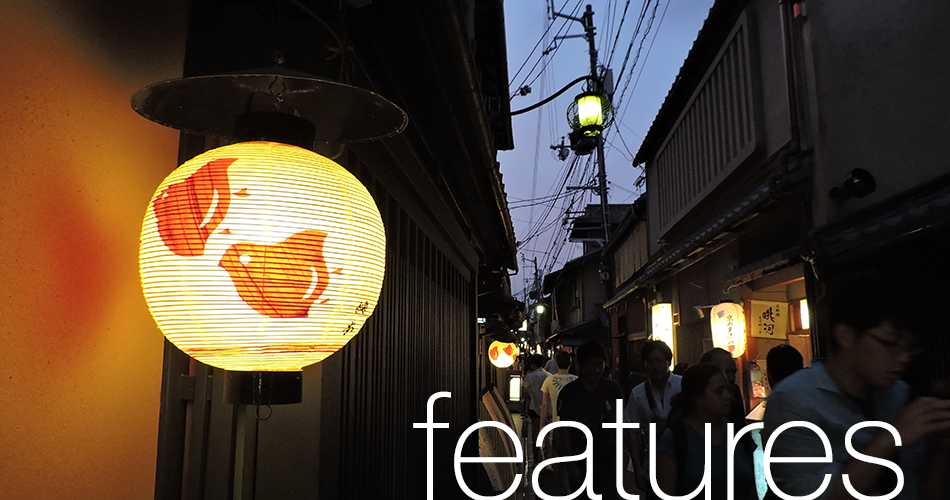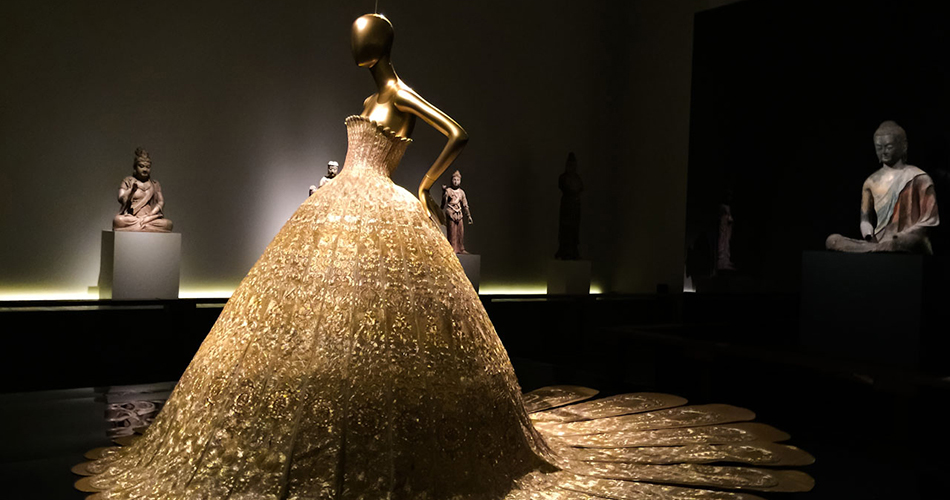


When The Metropolitan Museum of Art announced its annual Costume Institute exhibition, “China: Through the Looking Glass,” many were anxious about the portrayal of the East Asian country – would it be authentic, or simply thinly veiled Orientalism at work?
The exhibition was a collaboration between the Costume Institute and The Department of Asian Art – in celebration of the centennial for the Asian Art Department, which became a standalone department in 1915. The main curator of the exhibition, Andrew Bolton, made it clear that it was less about China and more about the “collective fantasy of China” and its representation in Western fashion and culture. The exhibit focused on Chinese art and film, two prominent sources of inspiration for Western fashion designers throughout history. Wong Kar Wai, a renowned film director from Hong Kong, served as the artistic director for the exhibit.
The exhibit was supposedly a positive spin on the negative connotations of Orientalism, and explored how fashion designers view China through a “looking glass” or mirror, in reference to the titular Lewis Carroll story. Bolton wanted the exhibit to portray an authentic view of Western ideas of China, fully disclosing the fantasy that many placed upon the country in the 19th and 20th centuries. It portrays Western fashion and its Chinese inspirations through a veil – through a looking glass.
I was personally excited for this exhibit, since Chinese style and culture have been so influential globally through many years, and is rarely celebrated on such a large scale. Of course, I was nervous about potentially distasteful artistic decisions, but my own worries were more focused on the Met Gala rather than the exhibition itself.
The Met Gala, arguably the most high profile celebration of fashion and art every year, always attracts thousands of people, on both the red carpet and media. Every year the theme of the red carpet matches the exhibition, and though some brush off the theme and do their own thing, many in attendance use the theme as a creative outlet. In 2013, celebrities and industry insiders dressed to the theme of Punk, with studs and black everywhere. A Charles James retrospective in 2014 brought lighter colors and softer fabrics to the table. And in 2015, the invitation sent to all the guests called for “Chinese white tie.” For all intents and purposes, the term “Chinese white tie” was invented for the gala, and attendees took it to heart.
As one would assume, attire for the event was across the board. The Met Gala itself is more of a costume party than a fashion show, so flashy outfits are generally common. Interestingly enough, most gowns and suits were rather tame, possibly to avoid commotion. Many stuck to red and gold colors, with dragon and flower motifs. Of course, there were several who went all-out costume, more Halloween-like and appropriative than anything else. Sarah Jessica Parker’s outfit was outlandish and ignorant, with a ridiculous headdress that did nothing for appreciating Chinese culture and design. Others disregarded the theme entirely, and only a few actually attempted to pay tribute to Chinese design.
Rihanna was one of the few celebrities who honored the theme by doing her research and going to the source of the exhibition’s inspiration – Chinese design itself. She wore a lavish gown by Guo Pei, one of China’s most respected couture designers. The gown took almost two years to create, and before Rihanna, had never been worn off the runway. Guo Pei herself was also in attendance at the Gala, as a few of her designs were on display in the exhibit.
Media coverage of the gala was uninspired, and mostly consisted of lauding celebrities for their “fashion-forward” tastes while ignoring the majority of actual Chinese designers and celebrities present as well. Most Best Dressed lists included Sarah Jessica Parker’s towering headpiece and failed to recognize Fan Bing Bing’s positively regal cape.
Uninspiring, but unsurprising.
However, the Met Gala is never an accurate depiction of the quality of the exhibition. I was still excited to see how the Met could translate the relationship between Chinese and Western fashion design and culture.
The exhibition spanned three floors and multiple galleries, integrating itself into the museum space – the Costume Institute’s rooms were converted into lavish sets and landscapes while the Asian Art galleries displayed couture alongside ancient artifacts. Going downstairs to one of the main entrance spaces of the gallery saw a prominent description of the exhibit on the wall.
The description counters the negative connotations of Orientalism, a term that Edward Said made famous in 1978. Although he meant “the Orient” to mean the Arab world, popularly it is also used to refer to East Asia. This exhibit’s description stated: “While neither discounting nor discrediting the issue of the representation of ‘subordinated otherness’ as outlined by Said, this exhibition attempts to propose a less politicized and more positivistic examination.”
It was a purposeful idea, and one that had its roots in recognizing its own issues and attempting to reconcile them. The curators of the exhibition, both Chinese and non-Chinese, knew what kind of message they wanted to convey to people: we know this is not the real China and is a fantasy, but it is a fantasy that inspired waves of creativity.
Of course, there were issues with some of the implications as well: “While some may perceive an implicit power imbalance of such costuming [romantic Orientalism and emphasizing the role of the dress as a performative act], designers are driven less by the logic of politics than that by of fashion, which is typically more concerned with an aesthetic of surfaces than the specifics of cultural context.”
That statement is all well and good, except with one glaring error – you cannot separate fashion from culture, especially Chinese fashion and culture. Traditional fashion, which is what Western designers were inspired by, is inherently cultural because of its role in Chinese society and aesthetics. You cannot simply remove culture from fashion, which is what some Western designers tried to do when emulating Chinese aesthetics, simply creating chinoiserie instead. The Yves Saint Laurent fashion house was most guilty of this, capitalizing on the Opium Wars of the 19th century by naming one of their most famous perfumes “Opium,” (1977) which was on display in the galleries, and still sold today. It was a blatant disregard of Chinese history, and unfortunately the erasure of historical imbalance still pervades to this day.
In contrast, some Western designers truly found aesthetic excellence through Chinese inspirations. John Galliano, the British head designer of Dior, has consistently used Chinese motifs and chinoiserie as sources for his designs since his start as a creator. Unlike other designers who simply delighted in the images of dragons and red/gold patterns, Galliano truly delved into the core of Chinese aesthetics and integrated them into his designs.
Some Chinese designers were honored as well, like Guo Pei, alongside famous Chinese films and actresses that exposed China and its fashion to the Western world in the 20th century.
Every room had a specific theme, from Porcelain to Silk to Anna May Wong, and each of these themes had artifacts from Chinese history and culture displayed alongside Western dresses and accessories that were inspired by said artifacts. It was a beautifully curated series of galleries that brought the essence of every piece in the exhibit to the spotlight.
Overall, the exhibition was an aesthetic treat with an added exploration of the ties between China and the West. The main goal of the exhibit was to delve into China as an exotic fantasy, with a peripheral recognition of the problems that arose because of those views. There is always more dialogue to be had regarding these historical views and the implications of cultural appreciation versus appropriation, but the Metropolitan did well in honoring its long relationship with Chinese art, as well as ensuring a respectful retrospective that explores a facet of fashion design that is not often discussed in such high profile.
Exhibition Galleries - China: Through the Looking Glass. (n.d.). Retrieved October 23, 2015.
Holpuch, A. (n.d.). Met's China: Through the Looking Glass show presents a fantasy of the far east.The Guardian. Retrieved October 23, 2015.